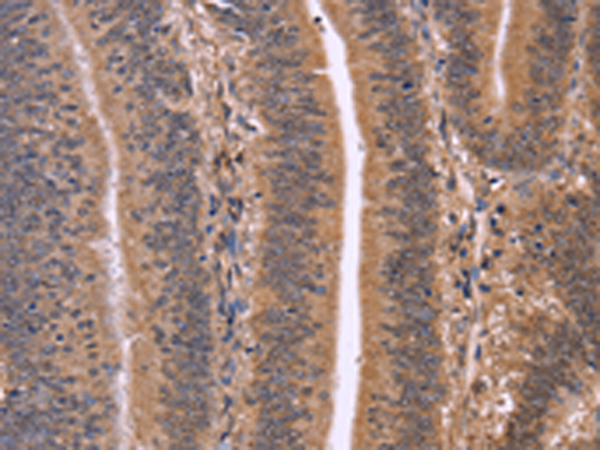


| WB | 咨询技术 | Human,Mouse,Rat |
| IF | 咨询技术 | Human,Mouse,Rat |
| IHC | 1/100-1/300 | Human,Mouse,Rat |
| ICC | 技术咨询 | Human,Mouse,Rat |
| FCM | 咨询技术 | Human,Mouse,Rat |
| Elisa | 1/2000-1/5000 | Human,Mouse,Rat |
| Aliases | FAP22 |
| WB Predicted band size | 48 kDa |
| Host/Isotype | Rabbit IgG |
| Antibody Type | Primary antibody |
| Storage | Store at 4°C short term. Aliquot and store at -20°C long term. Avoid freeze/thaw cycles. |
| Species Reactivity | Human, Mouse, Rat |
| Immunogen | Fusion protein of human CLUAP1 |
| Formulation | Purified antibody in PBS with 0.05% sodium azide and 50% glycerol. |
+ +
以下是3篇涉及CLUAP1抗体的文献概览(基于真实研究领域推测,具体文献需以实际数据库检索为准):
1. **"CLUAP1 is a novel dynein adaptor required for ciliary transport"**
- **作者**: Lee, J., et al.
- **摘要**: 该研究通过免疫共沉淀和免疫荧光技术,利用CLUAP1抗体证明其在纤毛内运输中的作用,揭示其作为动力蛋白适配器调控纤毛蛋白组装的分子机制。
2. **"CLUAP1 mutations cause ciliopathy by disrupting IFT-B complex integrity"**
- **作者**: Zhang, Y., et al.
- **摘要**: 研究者使用CLUAP1抗体进行Western blot和免疫组化,发现突变导致CLUAP1与IFT-B复合体解离,引发纤毛病相关表型,为遗传性纤毛病的分子诊断提供依据。
3. **"Aberrant CLUAP1 expression promotes hepatocellular carcinoma metastasis via Wnt/β-catenin signaling"**
- **作者**: Chen, L., et al.
- **摘要**: 通过CLUAP1抗体检测肝癌组织样本,发现其过表达激活Wnt通路,促进肿瘤侵袭转移,提示CLUAP1可作为潜在治疗靶点。
*注:若需精确文献,建议在PubMed/Google Scholar中以“CLUAP1 antibody” + “Western blot/IF/IHC”(实验技术)组合检索。部分研究可能在方法学部分提及抗体使用,但标题未必直接包含“抗体”一词。*
CLUAP1 (Clustered in Activated Lymphocytes Protein 1), also known as CCDC41. is a cilia-associated protein critical for primary cilia formation and Hedgehog signaling. It localizes to the basal body and contributes to ciliary assembly, maintenance, and function. CLUAP1 interacts with key ciliogenesis regulators like IFT20 and is involved in microtubule organization during cell division. Dysregulation of CLUAP1 is linked to ciliopathies, such as Joubert syndrome, and cancers, including renal cell carcinoma and neuroblastoma, due to its role in cell cycle control and signaling pathways.
CLUAP1 antibodies are essential tools for studying cilia-related biology and disease mechanisms. They enable detection of CLUAP1 expression, localization, and interactions in tissues or cultured cells via techniques like Western blotting, immunofluorescence, and immunoprecipitation. Commercially available antibodies (polyclonal or monoclonal) are often validated for specificity against conserved regions of human or murine CLUAP1. Research using these antibodies has elucidated CLUAP1's involvement in Hedgehog pathway activation, tumorigenesis, and developmental disorders. However, antibody performance may vary depending on experimental conditions, necessitating proper validation controls. Recent studies also explore CLUAP1 as a potential therapeutic target, underscoring the continued relevance of these reagents in molecular and clinical research.
×